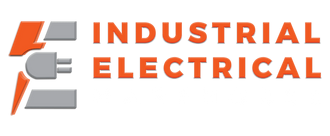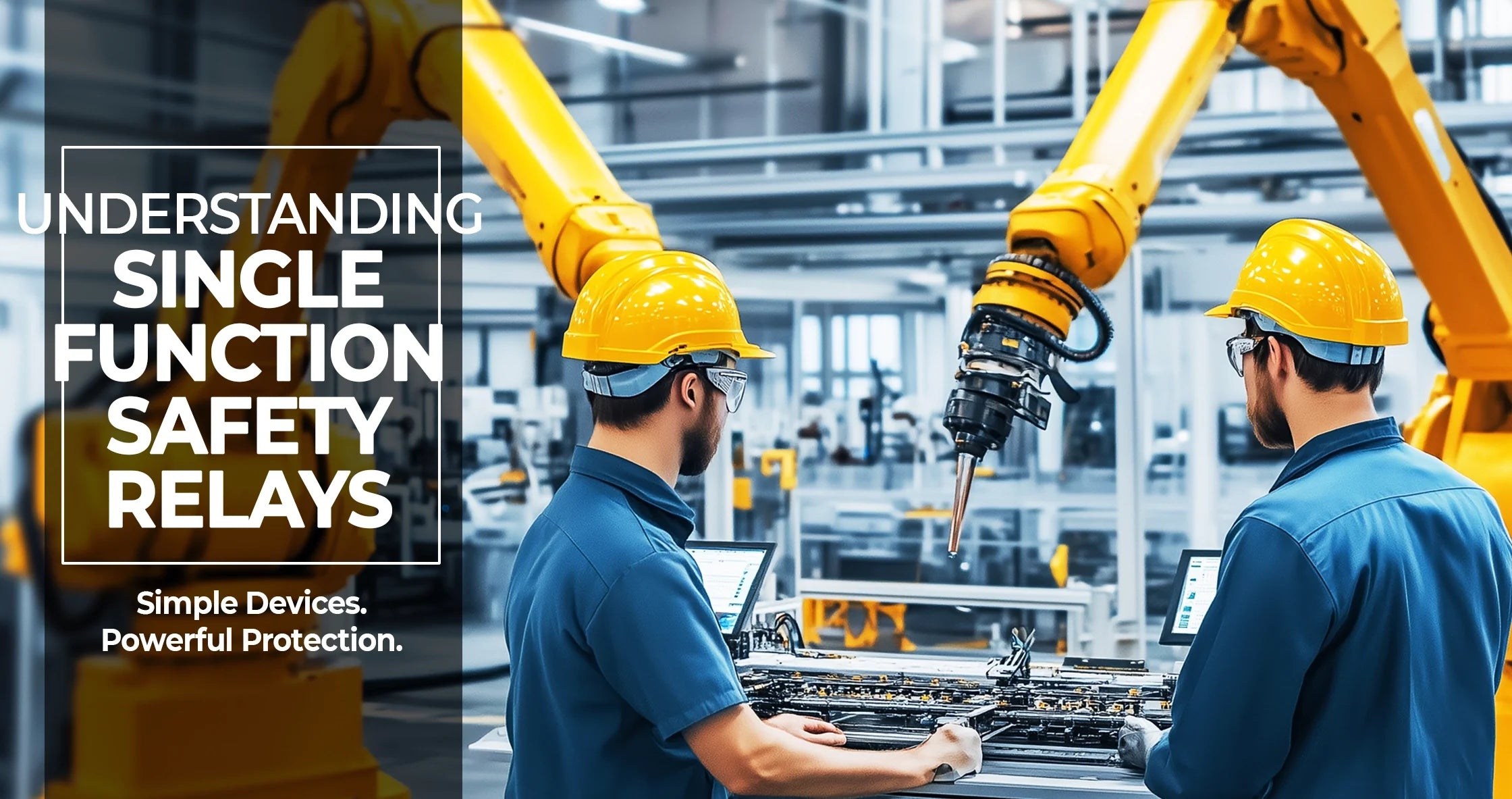In the realm of industrial automation, safeguarding both human lives and machine integrity is paramount. One of the essential components in a safety control system is the single function safety relay. This device plays a crucial role in executing specific safety tasks—particularly in systems requiring emergency stops, light curtain monitoring, or safety door control.
These relays are streamlined, cost-effective, and ideal for dedicated applications where a single safety function is required. In this blog, we will explore how single function safety relays work, where they are most commonly used, and how to integrate them effectively into your safety system.
What is a Single Function Safety Relay?
A single function safety relay is a specialized electrical relay designed to monitor a single safety function and initiate a safe response in the event of a fault or hazard. Unlike multi-function safety relays or programmable logic controllers (PLCs), which handle multiple safety inputs and outputs, a single function safety relay focuses on one specific task—such as monitoring an emergency stop or safety interlock.
Its compact design and straightforward wiring make it ideal for use in smaller machines or processes where safety requirements are limited to one function.
Key Features:
-
Monitors a single safety function
-
Complies with international safety standards (ISO 13849-1, IEC 62061)
-
Provides dual-channel inputs for redundancy
-
Delivers force-guided relay outputs for reliable switching
-
Fast response times
How Single Function Safety Relays Operate
The single function safety relay acts as the safety brain for a specific input device. When it detects a safe condition, it allows the machine to operate. If it detects a fault or hazardous situation, it interrupts the control circuit and initiates a safe stop.
Here's a simplified operational flow:
-
Input Activation – A safety input device (e.g., E-stop, light curtain, or safety door switch) sends a signal to the safety relay.
-
Monitoring – The relay evaluates the input’s state for proper operation and redundancy.
-
Decision Logic – If conditions are safe, the relay closes its safety outputs, allowing machine operation.
-
Intervention – If a fault is detected (like an open contact or cross-circuit), the relay opens the safety outputs, halting operations.
Each single function safety relay is hardwired for reliability and is pre-configured for its dedicated task, making installation and troubleshooting simpler.
Emergency Stop (E-Stop) Applications
An emergency stop is the most recognized safety feature in industrial environments. The single function safety relay for E-stop monitoring ensures that when the button is pressed, the machine stops safely and quickly.
How it works:
-
The E-stop button is wired to a dual-channel safety input on the relay.
-
Pressing the button opens both channels, prompting the relay to de-energize its outputs.
-
This cuts power to machine actuators or motors.
-
The relay monitors the integrity of the wiring and contact state.
Benefits:
-
Prevents accidental reactivation
-
Ensures immediate machine halt
-
Meets Category 3 or 4 safety requirements depending on configuration
E-stop relays are commonly found in:
-
Press machines
-
Conveyor systems
-
Packaging equipment
Light Curtain Applications
Light curtains are photoelectric sensors used to detect the presence of an object (often a human arm or hand) in a hazardous area. Integrating a single function safety relay with light curtains ensures compliance with safety standards and quick system response.
How it works:
-
The light curtain's signal is fed into the safety relay.
-
If the light beam is interrupted, the relay opens the safety outputs.
-
The machine stops or prevents restart until the beam is restored and reset conditions are met.
Use Cases:
-
Robotic work cells
-
Automated assembly lines
-
Injection molding machines
Advantages:
-
Simplifies safety control logic
-
Enhances operator safety
-
Quick response times to protect limbs from moving machinery
Safety Door Applications
Safety doors prevent access to hazardous zones while machinery is in motion. A single function safety relay can monitor door interlocks to ensure machines only operate when doors are properly closed and locked.
Typical Configuration:
-
Non-contact or keyed interlock switches are wired to the safety relay.
-
If the door opens, the circuit breaks and the relay halts machine operation.
-
Some models require manual reset to restart, ensuring intentional restarts only.
Benefits:
-
Protects operators during machine maintenance or setup
-
Prevents bypassing of safety measures
-
Applicable in CNC machines, laser cutters, and more
Comparing with Multi-Function Relays and Safety PLCs
While a single function safety relay excels in simple safety tasks, multi-function safety relays or safety PLCs are used for complex safety systems requiring multiple inputs and customized logic.
| Feature | Single Function Safety Relay | Multi-Function Safety Relay | Safety PLC |
|---|---|---|---|
| Number of Functions | 1 | Multiple | Multiple |
| Programming Required | No | Minimal or none | Yes |
| Cost | Low | Medium | High |
| Setup Complexity | Simple | Moderate | Complex |
| Application Suitability | Basic Machines | Mid-level systems | Complex systems |
Installation Tips for Single Function Safety Relays
-
Choose the Right Relay – Select a model compatible with your safety input device and meets the required performance level (PL).
-
Dual-Channel Wiring – Always use dual-channel connections for redundancy and fault detection.
-
Short-Circuit Protection – Include fuses or circuit breakers to protect outputs.
-
Reset Mechanism – Understand if your application needs automatic or manual reset and configure accordingly.
-
Test Before Deployment – Validate the entire safety circuit in accordance with ISO 13849 or IEC 62061.
Where to Buy Quality Single Function Safety Relays
Looking for reliable single function safety relays? At Industrial Electrical Warehouse, we stock top-rated models from trusted brands including Allen-Bradley, Schneider Electric, and Siemens.
Visit our Automation & Controls collection for relays suited to your safety needs, or browse related categories:
Final Thoughts
A single function safety relay may appear simple, but its role in ensuring safety and regulatory compliance is immense. Whether you're integrating an E-stop, light curtain, or safety door, the right relay ensures swift intervention when it matters most. For applications with minimal safety tasks, these relays offer the ideal balance between cost, performance, and ease of use.
Make safety a priority—start with the right components.


